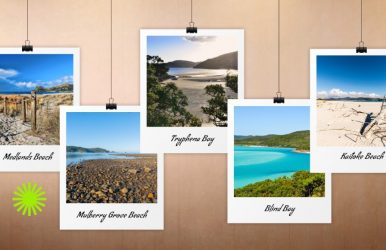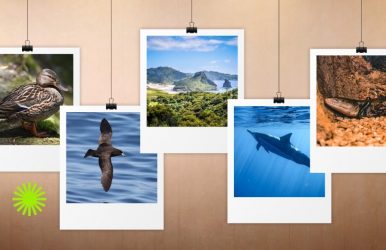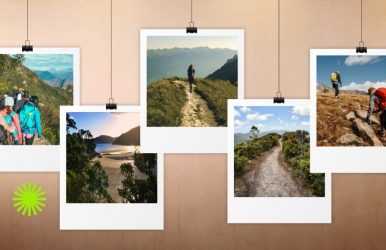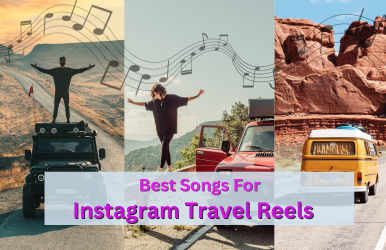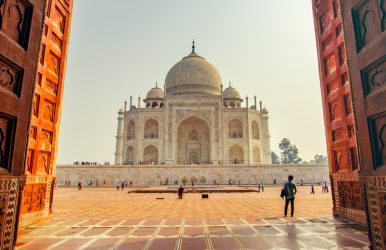What Are The Best Kotor Montenegro Cheap Eats? Where Do Locals Eat In Kotor?
BY Sibashree Dec 6, 2025
Kotor, Montenegro, is more than a UNESCO World Heritage Site. We know it for the stunning views of the Kotor Bay and its unique medieval charm. However, the food story of Kotor is not as fascinating as its Old Town Square, City Wall, and century-old stone houses. And the best thing is that the local flavors are delightful yet ideal for backpackers and budget travelers through the Balkans. My days in Kotor, Montenegro, were about savoring hot pastries and local seafood delicacies. I was traveling on a shoestring budget, and in this travel guide, I will talk about the Kotor Montenegro cheap eats and where the locals eat. Kotor Montenegro Cheap Eats: Why Is Kotor A Paradise For Foodies On A Budget? Before I visited Kotor, Montenegro, I read an article named “Keeping Montenegro’s flavours alive” by the Food and Agriculture Organization of the United Nations. It showed how the European Bank for Reconstruction and Development (EBRD) has helped around 100 smallholder farmers to keep the century-old culinary traditions and flavors alive. The fresh produce, such as mushrooms and blueberries, offers tourists the most organic and authentic food experience. Also, they are hosting tourists, and hospitality has become a way of income for them. Danka Sekularac, while talking to EBRD, said, “We have organic food, always organic. We have blueberries, mushrooms, actually everything. We do not buy anything at the market. That’s the best because we make the food with our hands and we know how it’s made. And it’s very delicious for tourists.” The story came to mind more so because, recently, Montenegro's food imports exceeded exports by 25%, according to a FreshPlaza report. Still, Kotor, Montenegro, remains a food paradise for budget travelers, with opportunities such as farm stays, rural exploration, wine tasting, and oyster farming. Furthermore, traditional Montenegro dishes such as Njeguški pršut, kacamak, and burek are hearty and affordable. In addition, a meal at the street food stalls or the family-run taverns costs just around $10. Moreover, the fresh seafood and seasonal produce here make dining affordable and more delicious. Let’s discuss these aspects in detail. 1. Farm Stays And Farm-To-Table Experience You can include staying in a Katun or a traditional farm hut and having the best locally grown meals in your Kotor, Montenegro, travel itinerary. This is not about just having farm-fresh food. You can be a part of the harvesting and cooking process for a wholesome experience. 2. The Art Of Slow Travel Slow travel has brought the ultimate paradigm shift in tourism these days. Kotor, Montenegro, offers you ample chances for slow tourism. You can plan a stay in the rural areas. You can experience their local life and hospitality. This way of traveling is also beneficial for the local economy and community development. 3. A Tour Of Oyster And Mussel Farms You can drive to Ljuta and find farms that use sustainable aquaculture practices. You can have the best and freshest oysters and delicacies made with mussels here. 4. Olive Oil Tasting Luštica is a drive of less than 30 minutes from Kotor. Here, you will find ancient olive trees that are 1000 years old. You will also find facilities where olive oil is produced using ancient methods. 5. Affordable Traditional Cuisine The authentic and hearty cuisines of Montenegro, such as Njeguški pršut (smoked ham), kacamak (cornmeal with cheese), and burek (savory pastry), cost just around $2-$5 per portion. 6. Street Food And Bakeries I had the best savory pastries at Montenegro. The local bakeries used to sell them at $1-$2. Furthermore, sandwiches and grilled meats cost $5. 7. Family-Run Konobas The family-run taverns in Kotor, Montenegro, are not just eating places. These are the places where you make bonds and experience how food can bring people from different cultures and countries together. The owner of the Konoba offered me Kanija, or the local brandy, for free, and then I ordered a seafood platter. It cost me $10. 8. Seasonal Freshness Kotor is rich in seafood. If you are especially in Kotor in the off-season, you will get fresh seafood at a minimum discount of 40%. 9. Market Culture As you head for a picnic by the Kotor Bay, visit the market before. You will get fresh fish, seafood, cheese, fruits, and cured meat for less than $10. Where To Eat Cheap In Kotor Montenegro? Know The Best Restaurants, Cafes, And Bars In Kotor Old Town? The Old Town, with its historic charm, Dobrota, with its waterfront cafes and affordable seafood, and Muo, with family-run konobas, are the best neighborhoods in Kotor for budget-friendly eating. Along with the traditional konobas, the restaurants and wine bars of Kotor, Montenegro, also serve authentic Montenegrin cuisine. Explore any of the following restaurants, cafes, and bars. 1. Restobar Taraca View this post on Instagram A post shared by Resto Bar TARACA | Best Restaurant and Food in Kotor (@restobar.taraca) Google Rating: 4.5 Pocket Pinch: €10 - €15 (Per Person) Want to have the most magical food experience in Kotor? Grab a table on the terrace at Restobar Taraca and watch the Sun spread its brightest red as you savor seafood delicacies with a Mediterranean twist. Furthermore, if you are in Restobar Taraca, you must try grilled octopus with olive oil and herbs. 2. Konoba Scala Santa View this post on Instagram A post shared by Konoba Scala Santa (@konobascalasanta) Google Rating: 4.5 Pocket Pinch: €15-€30 (Per Person) Konoba Scala Santa is one of the oldest taverns in Kotor. It offers a true Balkan experience as you sip the local Vranac wine with the signature smoked ham (Njeguški pršut) and cheese platter. You have to be a little particular about your dress code if you are visiting Konoba Scala Santa. Choose smart casuals as your outfit. 3. Restoran Cesarica View this post on Instagram A post shared by Dalmatinska konoba Cesarica (@cesarica_kotor) Google Rating: 4.4 Pocket Pinch: €20-€25 (Per Person) Cesarica is a seafood lover’s dream in the Kotor Old Town. Cesarica is a favorite among seafood lovers as it always serves the “catch of the day.” A fresh catch from the Adriatic and a freshly looked dish from it make the day for the visitors. You must try the cuttlefish ink black risotto at Cesarica. 4. Hoste Google Rating: Not Available Pocket Pinch: €10 - €15 (Per Person) Hoste is a trendy café-bar perfect for brunch or evening cocktails. If you truly experience “eating like a local” at Hoste, you must try avocado toast with poached eggs. Also, the espresso martini here is a local favorite. 5. Galion Google Rating: 4.2 Pocket Pinch: Around €50 (Per Person) To be honest, Galion is not ideal for budget travelers. It offers an upscale dining experience with panoramic views of the Kotor Bay. If you are planning a romantic dinner here, you can reserve a waterfront table in advance. Also, it is famous for its lobster pasta with creamy sauce. 6. Astoria Restaurant Google Rating: 4.4 Pocket Pinch: Around €25-65 (Per Person) How about trying the authentic cuisines of Kotor with some local flavors? Astoria Restaurant is the place you need to be. The setup inside a historic hotel is elegant, and their tasting menu offers a complete culinary journey. Beef medallions with truffle sauce are the star of their menu. 7. Bastion Google Rating: 3.9 Pocket Pinch: Around €15-30 (Per Person) Bastion offers hearty Montenegrin meals in a rustic ambiance. It is famous for its slow-cooked lamb. Also, the portions in Bastion are generous. So, you can share the delicacy with others. 8. Pizzeria Pronto View this post on Instagram A post shared by BEST PIZZA IN TOWN🍕 (@pizzeria__pronto) Google Rating: 4.4 Pocket Pinch: Around €5-€12 (Per Person) If you are in Kotor Old Town, Pizzeria Pronto is the best place to try authentic wood-fired Italian pizza. I loved the spicy Diavola the most. You can also try variations such as Capricciosa and Margherita. It is very close to the Main Square of Kotor, and the joint is a great conversation starter with fellow travelers and locals. 9. BBQ Tanjga Google Rating: 4.7 Pocket Pinch: Around €30-€40 (Per Person) The day I visited BBQ Tanja, I was running a little late for the day. Fortunately, I found this place serving authentic Montenegrin food just outside the Kotor Old Town. I could see meat getting grilled through the glass cover as I entered the space. The interior has a unique setup, with the walls covered in images of a compass and scribbles. However, I preferred to sit in the backyard area, which was quiet and more aesthetic. I was in a hurry. So, I tried some chicken and pork. You can even opt for the family platters with different sauces, pickled onions, cabbage, French fries, and bread. I also loved the bottle of Cedevita in lime flavor. It was a much-needed dose to start the day. What Are The Hidden Gems in Dobrota? Dobrota, home to the Clock Tower and Maritime Museum, is also famous for its food scene. It has some hidden gems offering the ultimate Montenegro food experience. 10. Dobrotski Dvori View this post on Instagram A post shared by Dobrotski Dvori Kotor (@dobrotskidvori) Google Rating: 4.5 Pocket Pinch: Around €15-€20 (Per Person) Dobrotski Dvori is a family-run konoba by the water. It serves grilled calamari with garlic and parsley. You must visit the tavern early and book a table for an amazing view of the Kotor Bay. 11. Konoba Portun View this post on Instagram A post shared by Portun Konoba (@konobaportun) Google Rating: 4.7 Pocket Pinch: Around €20 (Per Person) Konoba Portun serves homemade rakija with their seafood delicacies and grilled specialties. Enjoy the local vibe here and don’t miss the Seafood Salad. It costs 17.5€. You can even try the Cold fish platter for two. You will get an amazing view of the Boka Bay from Konoba Portun and 12. Mudra Art Cuisine View this post on Instagram A post shared by Mudra Art Cuisine | fine dining (@mudra.artcuisine) Google Rating: 3.9 Pocket Pinch: Around €35 (Per Person) Mudra Art Cuisine is not a cheap eating place, let me be honest! However, you cannot miss the mention of this place when discussing authentic Montenegrin food. Chef Iskander spills magic in every dish he makes with locally-sourced and organic ingredients. The Tuna Crudo & Burrata, with a raspberry-and-tomato cold soup infused with herbs, is a specialty here. It cost around 32 Euros. You can even try grilled seafood, lobsters, and octopus dishes here. There is a special kid-friendly menu at Mudra Art Cuisine, making it ideal for a family dining experience. 13. Hotel Forza Mare View this post on Instagram A post shared by Forza Hotels (@forzahotels) Google Rating: 4.4 Pocket Pinch: Around €35-40 (Per Person) Hotel Forza Mare is located inside a boutique hotel. It is famous for sunset dinners and a stunning view of the Kotor Bay. Sea bass filet with roasted garlic ragout and scallops with potato cream are some of the specialties of Hotel Forza Mare. Again, this is not ideally a place for Kotor Montenegro's cheap eats. What Are The Hidden Gems In Muo? Black risotto made with squid ink, grilled calamari, cheese, and local meat dishes are the delicacies you must try at the restaurants in Muo. However, as staying in the hostels in Kotor, Montenegro, offers an authentic and culturally enriching experience, the family-run taverns or Konobas are the best place to try the traditional Montenegrin cuisine. Try any of the following places. 14. Konoba Akustik View this post on Instagram A post shared by Konoba Akustik Porto Kotor (@konoba.akustik.kotor.porto) Google Rating: 4.6 Pocket Pinch: Around €10-20 (Per Person) I had the best Niksicko beer, brewed in Montenegro, along with grilled lamb chops. The sun was setting, spreading its brightest red over the Kotor Bay. The silence of the sunset was broken as the entire setup started preparing for the acoustic night. Mixed prawns and mussels, and Shopska Salad, a Balkan specialty with cheese, tomatoes, and cucumber, are the other must-try dishes at Konoba Akustik. Comparing The Best Kotor Montenegro Cheap Eats: A Summary Table RestaurantsCuisineLocationPrice Range (€)Must-Try DishRestobar TaracaMediterranean / SeafoodKotor Old Town10-15Grilled octopus with olive oil & herbsKonoba Scala SantaBalkan / MontenegrinKotor Old Town15-30Njeguški pršut & cheese platterRestoran CesaricaSeafoodKotor Old Town20-25Cuttlefish ink black risottoHosteSnacks and CoffeeKotor Old Town10-15Avocado toast with poached eggs, espresso martiniGalionSeafoodKotor Old Town50Lobster pasta with creamy sauceAstoria RestaurantMontenegrinKotor Old Town25-65Beef medallions with truffle sauceBastionMontenegrinKotor Old Town15-30Slow-cooked lambPizzeria Pronto ItalianKotor Old Town5-12Wood-fired pizza (Diavola, Capricciosa, Margherita)BBQ TanjgaMontenegrinKotor Old Town30-40Grilled chicken & pork, family plattersDobrotski DvoriMontenegrin / SeafoodDobrota15-20Grilled calamari with garlic & parsleyKonoba PortunMontenegrin / SeafoodDobrota20Seafood salad, cold fish platterMudra Art CuisineMontegrin Fine DiningDobrota35Tuna Crudo & Burrata, grilled seafoodHotel Forza MareMontenegrin / SeafoodDobrota35-40Sea bass filet with roasted garlic ragout, scallops with potato creamKonoba AkustikMontenegrin / BalkanMuo10-20Grilled lamb chops, mixed prawns & mussels, Shopska salad Traditional Montenegrin Dishes You Must Try Traditional Montenegrin dishes are a wonderful fusion of Balkan and Mediterranean influences. Along with fresh seafood delicacies, you can also try hearty and slow-cooked meat dishes here. 1. Njeguški Pršut It is a smoked ham delicacy and a specialty of the Njeguši village. It is served uncooked, and the flavors in this cured meat come from the burnt beech wood. Traditional producers also believe that the distinct sea and mountain air of Montenegro make Njeguški Pršut so special. BBQ Tanjga is one of the best family-run joints to try Njeguški Pršut. You can also have this delicacy at any traditional tavern. 2. Kacamak Kacamak is a Balkan delicacy, and this cornmeal porridge is a rich mix of butter, potatoes, and salty cheese. Kacamak is more than a hearty meal. It is the national dish of Montenegro and has long been a staple among mountain dwellers. It is usually served with the toppings of sour cream, kajmak, or fried bacon. Moreover, it celebrates the country's agrarian route. 3. Burek These flaky pastries are also a Balkan specialty, with the savory ingredients varying from one family to another. This delicacy originated in Central Asia, and the Ottoman Turks made it popular across countries such as Serbia, Croatia, Turkey, etc. Burek pastries vary in shape, from pie-like structures to snail shapes. Common fillings include cheese, ground meat, potatoes, spinach, and mushrooms. And I have seen many bakers using eggplant filling for these pastries. 4. Fresh Seafood Due to its location in the Adriatic Sea, Montenegro is rich in seafood. The nutrient-rich waters of the Adriatic Sea are home to diverse marine creatures, including fish, octopus, lobsters, and scallops. The geomorphological conditions of Boka Kotorska Bay and the traditional fishing culture are other major factors behind the ingrained seafood heritage of Kotor, Montenegro. Try delicacies such as octopus salad, Riblja Čorba, or a traditional fish soup and Buzara, a shrimp or mussels delicacy cooked in white wine. What Are The Best Neighborhoods For Budget Dining In Montenegro? The neighborhoods of Kotor, the Old Town, Muo, and Dobrota are a paradise for a budget eater. However, each neighborhood has a distinct charm, with the Old Town being the busiest and Muo offering a quiet dining experience. 1. Kotor Old Town It is great fun exploring the maze-like streets and the food stalls in Kotor Old Town. Also, when you wander away from the main squares, you get stalls selling local delicacies at a lower price. Also, the bakeries here are great for breakfast and snacks. You will get big portions of food for around 1 to 3 Euros in these bakeries. So, Kotor Old Town is a great locality to eat cheaply in the city. 2. Dobrota Dobrota is a favorite cheap eating place in Montenegro because of the variety of places it has. You can find a mini piazza or local stalls, family-run taverns, and restaurants. Furthermore, Dobrota especially has the best grilled meat delicacies of the other two neighborhoods. This is something only locals know. 3. Muo Muo, or the Muo Village of Kotor, Montenegro, is replete with family-run taverns or konobas. These eating places are more affordable than the ones in Kotor Old Town or Dobrota. Also, being family-run, the taverns offer authentic Montenegrin food. Seasonal Pricing And Dining Tips For Kotor Montenegro Cheap Eats For the transportation tips and cheap eats, you have to rely on locals or a local guide who will help you navigate Kotor. Furthermore, it is always a smart option to visit eateries that have “menu of the day” deals. Also, keep in mind how food prices here differ every season. Tourist SeasonsMonthsExpected Change In Food Price High SeasonJune to AugustA price hike of 20–30%Off SeasonOctober to AprilExpect a 30-40% discount on the food items Drinking water in Kotor is safe. So, you can carry refillable water bottles instead of buying sealed bottles. Also, try the local wines and beers, such as Nikšićko, to save money. Moreover, you must avoid restaurants that offer “special tourist menus.” These are marketing tricks and traps for charging a higher price for the same food. What Are The Vegetarian And Vegan-Friendly Spots In Kotor, Montenegro? Many local taverns and eateries serve vegetarian and vegan-friendly options in Kotor. 1. Vegan Options Restobar Taraca is the most-trusted vegan-friendly eating option in Kotor. Its Buddha bowl, Vietnamese rolls, sandwiches, and teriyakis are some of the extensive vegan options available. Java Coffee in Tivat is another vegan-friendly eating option in Kotor, Montenegro. It is especially famous for its vegan breakfast items and drinks. You can have overnight oats, chia pudding, raw cakes, wraps, and plant-based milk here. Hamsa Hummus & Happiness and Nama Sushi are two other popular vegan-friendly options in Kotor, Montenegro. 2. Vegetarian Options Pizzeria Pronto, with its varied options in veg pizzas, is a popular vegetarian eating joint. Here, you will get the most popular veg options, such as Garden Fresh pizzas with fresh veggies, and simple Margherita pizzas with basil, fresh mozzarella, and tomato sauce. You can even eat Spinach & Feta pizzas or the classic veggie one with bell peppers, mushrooms, tomatoes, etc. What Are The Insider Tips For Eating Cheap In Kotor? The tips for eating cheaply in Kotor start with choosing the right accommodation. Find a hostel or a budget-friendly accommodation with provisions for cooking. Now, look for discounts and deals at local supermarkets. Stock up on meats, prosciutto, crackers, nuts, cheese, and wine. Furthermore, if you are eating out, find out places that sell pizza by slices and shareable meat platters. Also, have Burek for breakfast and as snacks. These flaky pastries are very filling, and most local bakeries sell them at 1 to 3 Euros. Kotor Montenegro Cheap Eats: Frequently Asked Questions (FAQs) Here are the frequently asked questions and answers about Kotor Montenegro, cheap eats. 1. What’s The Average Cost Of A Meal In Kotor? The average cost of a meal in Kotor, Montenegro, is around 10 to 20 Euros. However, this amount is for lunch and dinner. For breakfast and evening snacking, you can have pastries from local bakeries, and the cost will be 1 to 3 Euros. 2. Is Tipping Expected In Kotor? Yes, tipping is customary in Kotor. Paying a 10% on your bill amount is the standard practice. However, if your restaurant bill already includes a service charge, it is you who can decide whether to pay the tip.Furthermore, when staying in a hostel or hotel, you will have to pay a tip of €2-€3 to the maids and €1 per luggage to the porters.In addition, a standard tip for a tour operator is €5-€10 per person. 3. Are There Late-night Food Options? Yes, Kotor has late-night food options. You will mainly find the pizzerias and eateries selling food late at night near the Kotor Old Town. The Nitrox Pub & Eatery is a popular eating and hanging out zone in Kotor. However, if you don’t want to visit a pub or bar, you can try local cuisine at traditional taverns or konobas. 4. Can I Find Vegetarian Food Easily? Yes, many eating places or traditional taverns in Kotor serve vegetarian food. Pizzeria Pronto is a popular joint to have vegetarian pizzas. Some other vegetarian-friendly food joints here are Restobar Taraca and La Catedral Pasta Bar. 5. Where Can I Buy Cheap Snacks? The local bakeries and Kotor Market are the best places to buy cheap snacks in Kotor, Montenegro. You can always negotiate with the local vendors, and the local market is the best place for buying vegetables and fruits at a low price. However, supermarkets are better options if you are stocking up in bulk. There you will find the family packs, best discount deals, and offers.





